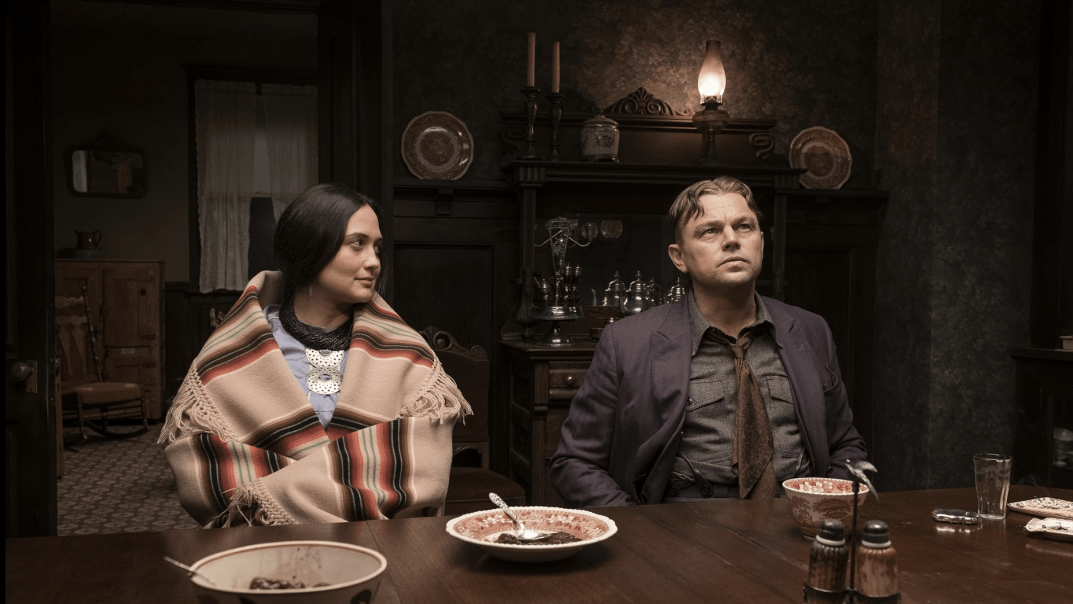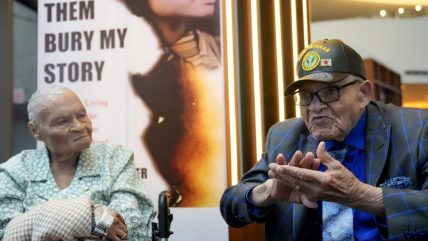‘Killers of the Flower Moon’ is not a great film, but it is an important film for one simple reason
OPINION: Martin Scorsese's epic about the killings of the Osage people exposes another lost chapter in America's dark past and even alludes to another important historical moment — the Tulsa Race Massacre. If America’s educational system is not going to teach the truth about what happened in Tulsa and on the Osage reservation, then films like this are necessary.

Editor’s note: The following article is an op-ed, and the views expressed are the author’s own. Read more opinions on theGrio.
Director Martin Scorsese’s “Killers of the Flower Moon” is a flawed masterpiece. It is also important viewing for Black folks.
The film tells the true story of how a white businessman and self-proclaimed “true friend” of the Osage Nation orchestrated the murders of numerous members of the tribe in early 1920s Oklahoma. The Osage were forced to settle on land that happened to have oil on it, and because of the influx of wealth that the oil money brought, they were systematically killed for their “headrights” — their financial inheritance.
Sitting in a nearly full theater in Oklahoma City on a sunny Saturday in October, I was shocked that so many people decided to miss out on the nice weather and, instead, went to see a film whose runtime clocks in at three hours and 26 minutes and details the insidious nature of white supremacy.
Then I remembered who was in the film.
Leonardo DiCaprio is quite good (if not a bit manic) as Ernest Burkhart, a white man who marries an Osage woman. Robert De Niro turns in his best performance in years as William Hale, Ernest’s uncle. He is a man who gives to the right charities, kisses the babies of native people and smiles in the face of the Osage but secretly plots to steal their wealth because, on the one hand, he is money hungry, and, on the other, he believes he is entitled to their wealth because he is white and they are not.
The best part of this film is Lily Gladstone. She plays Mollie Burkhart, an Osage woman who, against her better judgment, marries DiCaprio’s Ernest. She steals every scene she is in, and it is a shame that she is sidelined for the second half of the film, which explains why this is, indeed, a flawed masterpiece.
This is a movie written by white men, directed by a white man and based on a book written by a white man — and it shows.
But watching the film as a Black man and a member of a Native American tribe living in Oklahoma, what struck me most was something that hasn’t been mentioned much by people discussing the film. It is an event that the filmmakers make a point to highlight in the narrative but is not the focus of the story. Yet, it looms large in the minds of the characters on screen.
The Tulsa Race Massacre.
The events this film depicts happened in Oklahoma from around 1920 to 1925. The Tulsa Race Massacre, where hundreds of Black people were killed by white citizens of that city, happened in May and June of 1921. The film goes out of its way to show the Osage being horrified by what happened not far from where they live. In fact, there is a scene in the film where a bomb goes off in the home of one of Mollie’s family members and people nearby shout, “They are attacking us just like they attacked the Black people in Tulsa!”
I can criticize the filmmakers for many things, but scenes like this show that they are at least trying.
Oklahoma only recently formally recognized the loss of Black life that happened in Tulsa in 1921. Many survivors of that atrocity died without anyone taking seriously the pain that they endured or giving so much as an apology for what happened. Three survivors of the massacre filed a lawsuit in an attempt to get reparations for what happened, but a district court judge dismissed the case. The state Supreme Court has agreed to hear an appeal from the two remaining survivors. (Hughes Van Ellis, one of the plaintiffs in that case and one of the last survivors of that massacre died this month at the age of 102.) There was so much silence surrounding that massacre that it wasn’t until HBO’s “Watchmen,” which depicted the massacre, that many became aware of that dark part of American history.
The same is true of the story this film tells, and it drives home for me a point that I have had to come to terms with recently.
In my youth, I grew tired of films that showed the horrors people of color had to endure in America. I wanted to do away with narratives that centered stories that depicted those realities.
I’ve changed my mind on that. I did not hear anything about the Tulsa Race Massacre in class. I learned about it from my great-grandmother. I did not hear about what happened to the Osage in any school. I had to hear about it from members of the Osage. If America’s educational system is not going to teach the truth about what happened in Tulsa and on the Osage reservation, then I am happy that films like this one will.
Living in Oklahoma, I have seen firsthand how, if left unchecked, white Americans will work hard to ignore the evil deeds of their ancestors. They will deny any links between the plight that people of color face today and what happened in the past, and they will try to argue that they have not gained any advantage on account of that history.
Films like “Killers of the Flower Moon” show us that this is not true. Actions done in the past echo through history, and the wrongs done 100 years ago still affect us today. Black people and the Osage were both murdered in the 1920s because of white supremacy. Neither group has found any justice. At least now, Martin Scorsese has forced America to see what they’ve endured.
“Killers of the Flower Moon” is not a great film, but it is an important one.

Lawrence Ware is a teaching assistant professor of philosophy at Oklahoma State University and co-director of the Center for Africana Studies.
TheGrio is FREE on your TV via Apple TV, Amazon Fire, Roku and Android TV. Also, please download theGrio mobile apps today!


